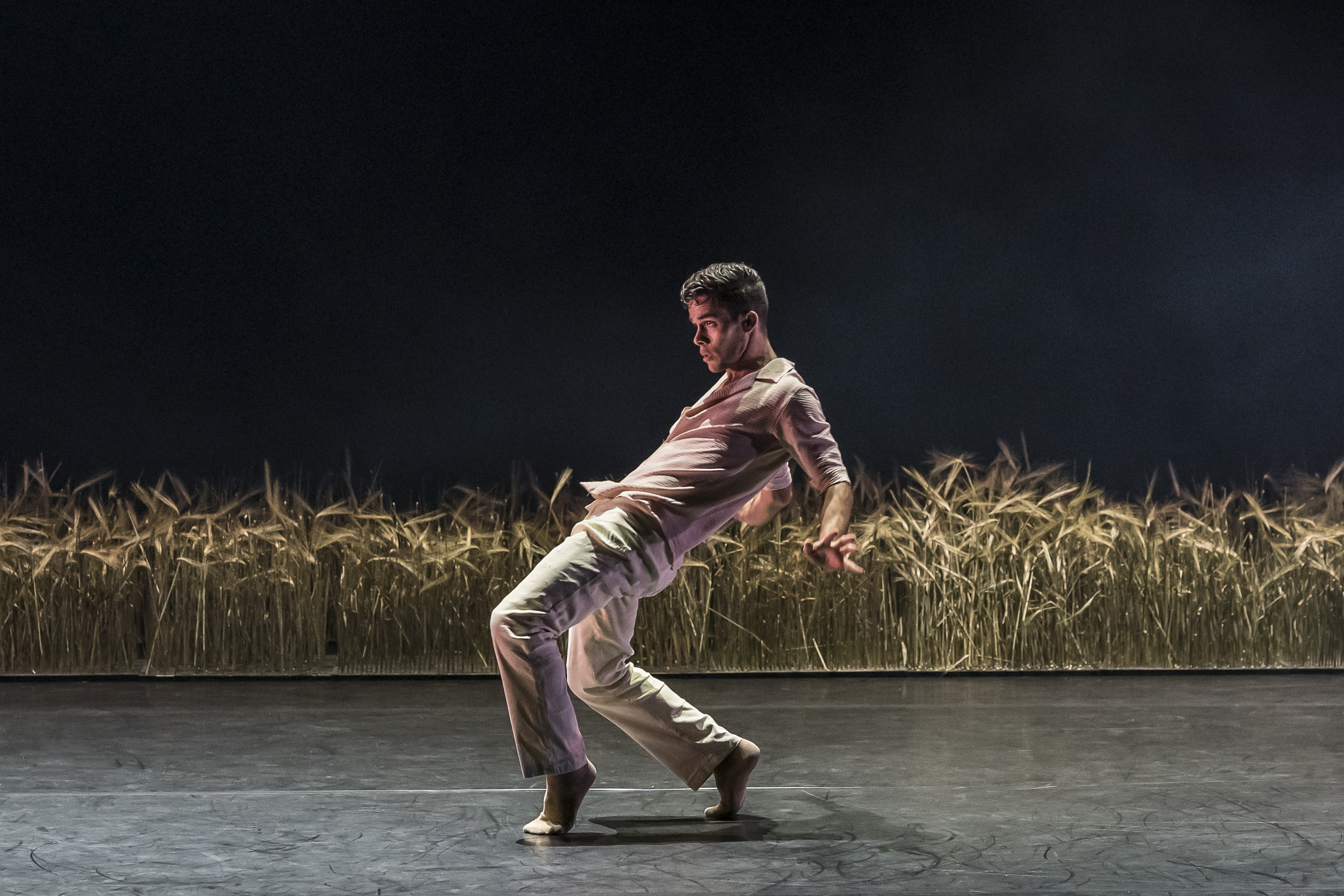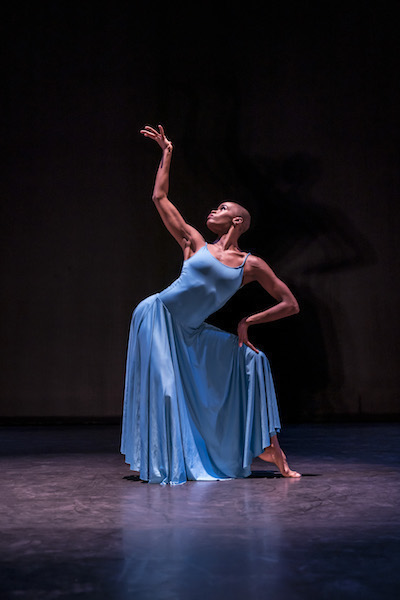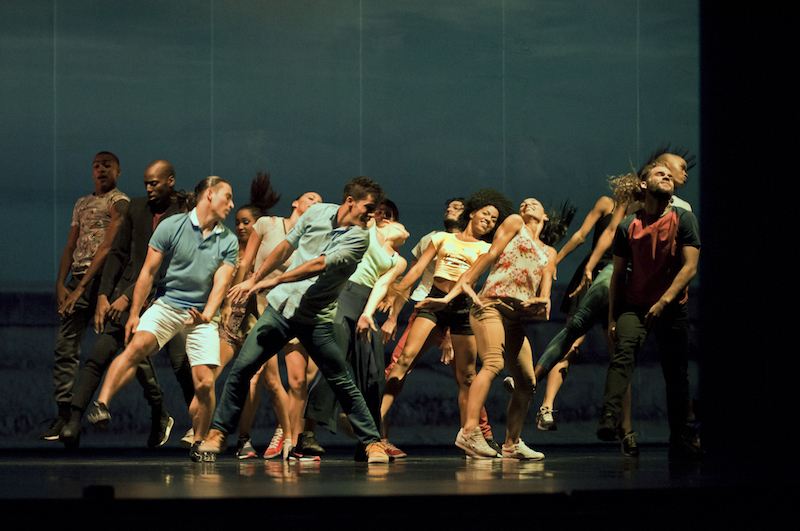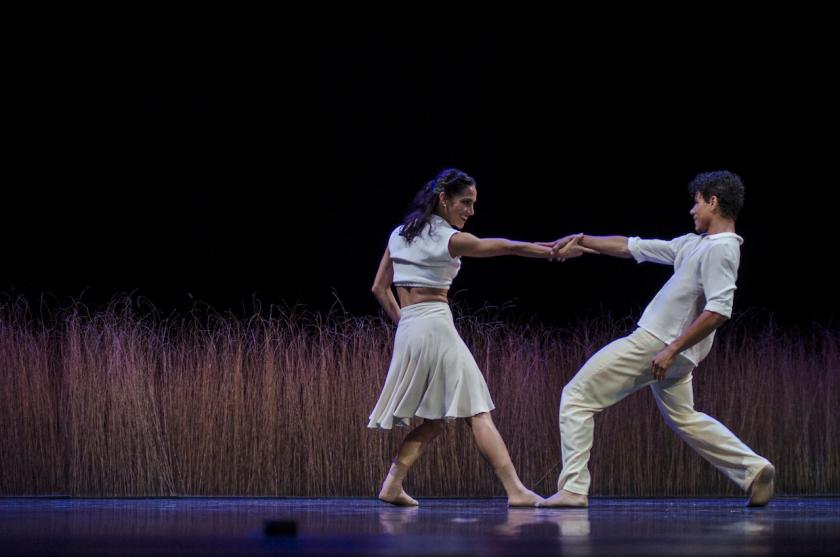If Carlos Acosta could have bottled the year-round sunshine of his native Cuba, he would have. Instead he did the next best thing and founded Acosta Danza. Seven years later, years which included a UK tour kiboshed by the first lockdown, when the company only narrowly made it on to the last plane back to Havana, the troupe is sleeker, slightly smaller, but if anything even more ebullient. The show currently touring the UK, titled 100% Cuban, may comprise only 80% new material, but it’s the full mojito in terms of sunny energy and pizzazz.
The Cuban tag doesn’t only apply to the dancers. There’s not an item on the programme that doesn’t illuminate some aspect of contemporary Cuban life, whether that be the persistence of the Santeria religion (an intriguing mix of Catholic and West African beliefs), the draw of the beach as a social space, or the popularity of the island’s many indigenous dances, engaged in by everyone, young and old. You don’t need a programme note to tell you that Cuba is a melting pot of Africa and Europe. You see it in the carefree hop and jiggle of rumba, the slinky swivel of salsa and merengue, and you feel it in the solar plexus with every beat of the tall, single-headed Cuban drum.
Impressively, the evening opens with a work made by a member of the company, Raúl Reinoso. Mixing up folk and contemporary dance styles, fiction and mythology, and treading a fine line between narrative and abstraction, Liberto (meaning freed man) presents the situation of a runaway slave whose fate looks grim until he appeals to the Yoruba gods for help. Tall, imposing Zeleidy Crespo glitters in green as the goddess, a-tinkle with tiny bells, who ultimately guides Yasser Dominguez – a rubber band of a man – to freedom.
 Crespo’s command of the folkloric dance styles of Cuba – and I'm guessing also her spectacular body – inspired a solo, Impronta, by Maria Rovira. She's the Spanish choreographer who a few years back created the dances for Yuli, the feature film about Carlos Acosta’s life. Here, luminous in a swirling dress of Caribbean blue, Crespo (pictured right) wows with her virtuosic physicality, the undulations of her back proving just as expressive as her long, strong arms. José V Gavilondo’s score brings the dance to a stomping rhythmic climax that feels like ancestral catharsis.
Crespo’s command of the folkloric dance styles of Cuba – and I'm guessing also her spectacular body – inspired a solo, Impronta, by Maria Rovira. She's the Spanish choreographer who a few years back created the dances for Yuli, the feature film about Carlos Acosta’s life. Here, luminous in a swirling dress of Caribbean blue, Crespo (pictured right) wows with her virtuosic physicality, the undulations of her back proving just as expressive as her long, strong arms. José V Gavilondo’s score brings the dance to a stomping rhythmic climax that feels like ancestral catharsis.
Hybrid, a new full-ensemble commission for Acosta Danza with a Hunger Games vibe, was the only piece that left me cold. I had to suppress a giggle when a maypole-like contraption descended from the ceiling, each of the 12 dancers solemnly took the end of a rope, waggled it for a bit, then watched it ascend from whence it came. The theme is loosely, very loosely, the myth of Sysiphus, condemned forever to roll a boulder up a hill, but both hills and large boulders being hard to conjure, the rope thing has to suffice and the piece, while brimming with youthful defiance, doesn't cohere.
Puntus Lidberg’s Paysage, Soudain, la nuit (pictured above and top) isn’t new – we saw it on this company’s last visit – but it’s so infectiously joyous that I’d gladly see it several times more. Against a field of tall sun-bleached grass (an installation by the artist Elisabet Cerviño) the performers cluster in constantly shifting formations to while away the magic hours between twilight and dawn, flirting, sleeping, dancing. Cuban composer Leo Brouwer provides a rumba-infused soundtrack that makes your feet twitch with longing to join in.
 But the evening’s laurels go to the closer, De Punta a Cabo ("from end to end"), whose panoramic take on contemporary Havana makes you feel you're actually there. Set to a clubby composite score, the action takes place on the malecón, the broad esplanade and seawall which stretches along eight kilometres of coastline to protect the city from the sea. It's famously a spot where people go to hang out, drink, make music, play sport or perform religious rituals. The genius of this piece is that behind the live dancers (pictured above) is a video projection of themselves dancing on the actual malecón, the Havana skyline looming behind them (lighting Yaron Abulafia). This not only effectively doubles the size of the company and makes it look like one hell of a party, but allows for some amusing interaction between the dancers and their avatars. At one point a boy sitting on the edge of the seawall plops out of view and the live dancers rush to him, concerned for his safety.
But the evening’s laurels go to the closer, De Punta a Cabo ("from end to end"), whose panoramic take on contemporary Havana makes you feel you're actually there. Set to a clubby composite score, the action takes place on the malecón, the broad esplanade and seawall which stretches along eight kilometres of coastline to protect the city from the sea. It's famously a spot where people go to hang out, drink, make music, play sport or perform religious rituals. The genius of this piece is that behind the live dancers (pictured above) is a video projection of themselves dancing on the actual malecón, the Havana skyline looming behind them (lighting Yaron Abulafia). This not only effectively doubles the size of the company and makes it look like one hell of a party, but allows for some amusing interaction between the dancers and their avatars. At one point a boy sitting on the edge of the seawall plops out of view and the live dancers rush to him, concerned for his safety.
The choreography by Maca and Yaday Ponce is again strongly inflected with local dance styles, introducting a nice contrast between the sneaker-wearing crowd and three girls who suddenly appear in point shoes to dash off some ballet moves. Later, a traditional tall Cuban drum is set up, leading you to think that one of the dancers is about to play it, but it's a tease (there's drumming to die for on the soundtrack). And then there's the body beautiful. No Havana waterfront scene is complete without a sighting of lithe bare bodies in the full range of skin-colours, and the company duly strip down to their tiny undies and continue to party.














Add comment